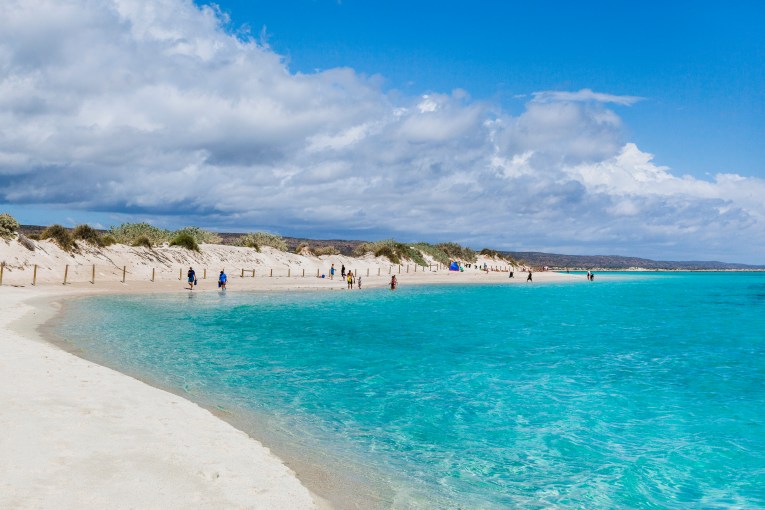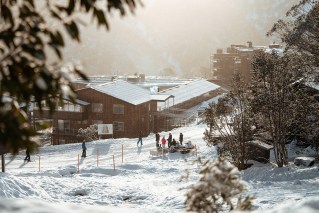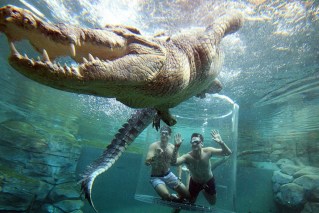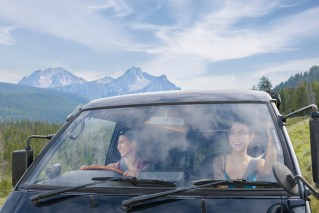A walk on the wild side in Kenya
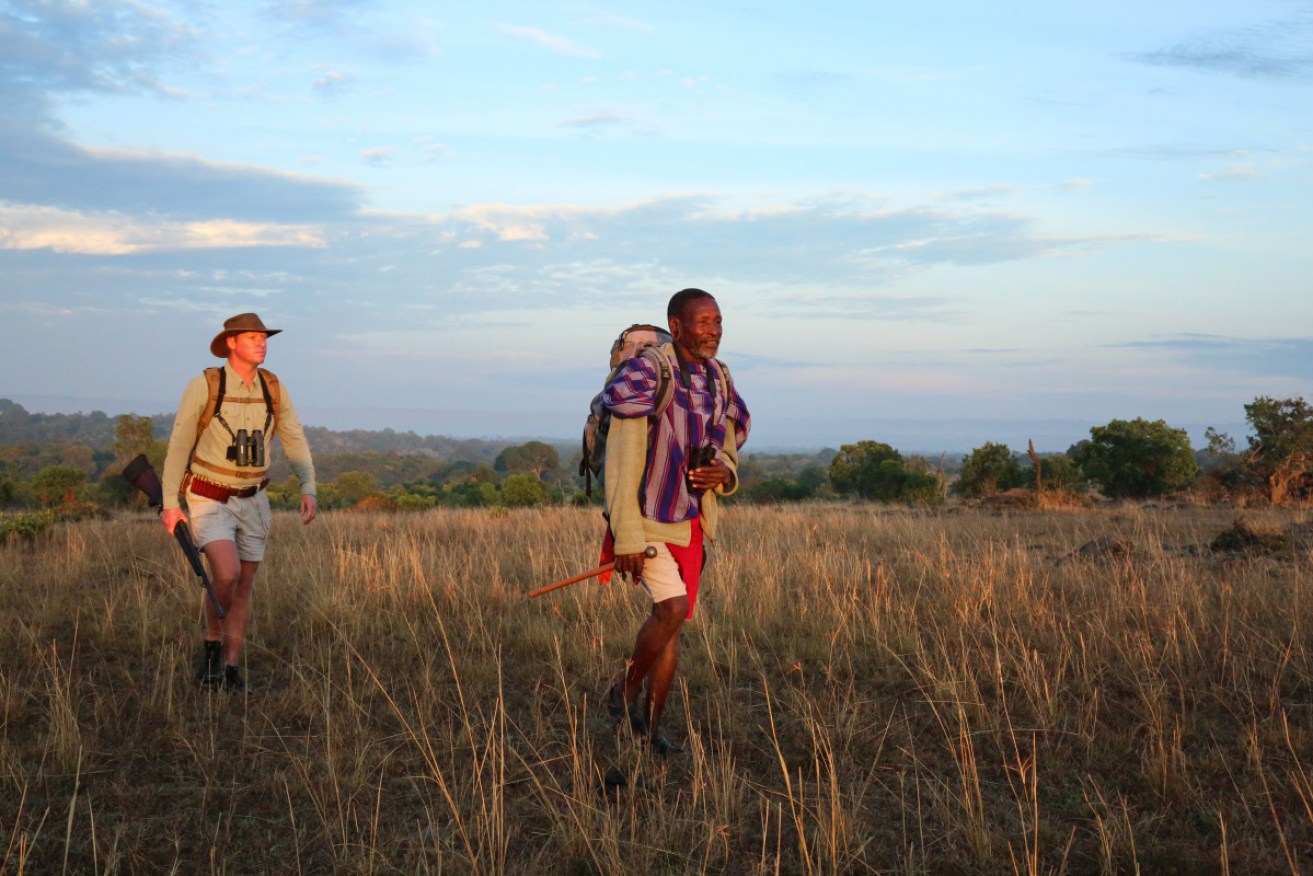
Walking across Kenya with the Maasai Mara. Photo: Graeme Green
Rakita picked a leaf from a tree and handed it to me, grinning. I put it in my mouth. “Hot?” he inquired, laughing, as the elephant pepper leaf’s chilli-esque heat hit my tongue and spread across my face.
We weren’t exactly in need of extra “warmth” as we completed a four-day, 85-kilometre hiking trip across five of the Maasai Mara conservancies above the famous Maasai Mara Game Reserve.
At the end of the dry season, temperatures sometimes hit the mid-30s as we walked for six to eight hours, covering 20 to 25 kilometres daily, across wildlife-filled plains and through thick woodland.
Still, there might be something more to the elephant pepper. Rakita, a Maasai hunter-gatherer from the Ndorobo clan, chewed a stem and walked tirelessly each day, despite being in his 70s.
“It’s bitter, but it stops you being thirsty,” he said, setting off again, his long strides carrying him at a brisk pace across the Mara’s grasslands.

Cheetahs are among the wildlife to thrive in the grasslands. Photo: Graeme Green
We’d started our trip at Naboisho Camp, spending two days photographing Naboisho Conservancy’s remarkable wildlife, from elephants and giraffes to tiny dik-diks and a rare caracal. Big cats are thriving here; we watched cheetahs hunting, a leopard climbing a rocky hillside and bushy-maned lions roaring into the night.
On day one, we’d set out at dawn with South African wildlife guide Roelof Schutte, who carried a rifle for safety, and Rakita Ole Shololo, for whom walking great distances is part of daily life. For us non-Maasai, this epic adventure was more of a challenge, but a rewarding one.
“It’s a chance to walk in an iconic place,” Roelof told me. “It’s good to push people’s limits.”
Communicating with flinger clicks to avoid disturbing the animals, we hiked up rocky hills and crossed open plains, spotting warthogs, impala, hartebeest and eland. The volume of animals was a sign of how healthy the wildlife across the Maasai-owned, privately managed conservancies is, where the Maasai are still able to rear their cattle, while money from tourism helps protect the land and wildlife.
“Conservancies are the way forward,” Roelof argued passionately. “They’re the future for the Mara.”
The conservancies are Maasai-owned, privately run conservation areas in this area not far from the border of Tanzania and Serengeti National Park.
We spent the night at Kicheche Bush Camp in neighbouring Olare Orok Conservancy before setting off next morning in darkness. It was an incredible feeling to walk in the Maasai Mara as the sun’s gentle glow lit up zebra, topi and wildebeest grazing calmly, undisturbed by vehicles.
“You experience wildlife in much more detail when you’re walking,” Roelof whispered, as we took it all in. “It’s a chance to slow down and really observe.”
We walked dry riverbeds and climbed granite outcrops, passing through areas vehicles would struggle to reach, all the way to a temporary fly camp set up among trees, close to the Olare Orok river, where a cooler filled with icy drinks awaited us.

The tour crosses the Maasai Mara’s traditional lands. Photo: Graeme Green
A two-tonne bull hippo crossed our path as we hiked through another tranquil morning. Up on a ridge, herds of wildebeest and topi scattered chaotically as hungry hyena gave chase.
We saw lionesses lazing under a tree and three cheetahs on the prowl, before stopping for lunch beside the Mara River, not far from sunbathing crocodiles and wallowing hippos.
After another night of wilderness camping, we climbed uphill to a rhino sanctuary in Ol Choro Conservancy.
“This is Queen Elizabeth and Kofi Annan,” community ranger Brian Ondialla Ole Naingis said, introducing us to two famously-named southern White rhinos who live under the constant watch of anti-poaching rangers. It’s a memorable experience to be so close to the rare and giant animals.
That afternoon had the toughest, hottest climbs of the trek, through sun-baked hills of Mara North Conservancy to end at Mara Bush Houses. As we toughed it out, Rakita took the heat and difficult terrain in his stride, as he had done throughout the trip.
“I can’t get sunburn. I can’t get dehydrated.” He said: “These days have been quite easy for me.”
The author travelled with Asilia Adventures, whose ‘Traverse the Mara Conservancies on Foot’ trips start from £3965 (about $A7235) per person for five nights, based on a group of four. Price includes accommodation, meals, house drinks, safari activities and return flights from Nairobi to Naboisho Conservancy, but not international flights.
Graeme Green is a photographer and journalist. Follow him on Instagram @graeme.green.
